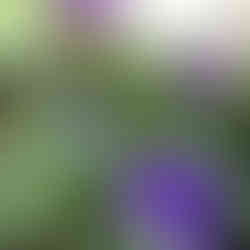Growing Diversity in the Garden
- MARNI growingrootstogether@gmail.com
- Feb 1, 2024
- 4 min read
Having a biodiverse garden benefits not only the gardener, but the plants as well! Many different plant species, flower types, and flowering times means lots of diverse beneficial insects are attracted to your garden that will help do the work of pollinating and controlling garden pests. Plus, you get a gorgeous and colorful garden with an array of harvest bounty!
Intercropping with herbs/edible flowers: Using beneficial plant families cropped or planted together with vegetables to maximize garden space while attracting beneficial insects and pollinators.
However, intercropping (or interplanting) can sometimes confuse a new gardener to the point of paralysis. Here are a few easy and proven ways to use edible flowers, herbs, and alliums to intercrop your way to garden health and tasty harvests.

In the above photo, the thin strip of planting space along the house has been maximized using every aspect of the plants growing habits and to give some separation between plants in the same family.
For example, the cascading habit of ground cherry, thyme, feverfew, and some nasturtiums means they can be used at the front edge of the bed, with bigger vegetables behind them. The wall space is perfect for climbing plants, such as the Malabar spinach. Nightshade family plants (tomatoes, peppers, eggplants) can be interplanted with herbs to help separate the root zones, meaning less competition between the family. Think family get togethers and how helpful a buffer would be between two "certain" family members! In this photo I have a perennial Mexican tarragon between a tomato and a pepper.
Edible Flowers
Some of the easiest (and prettiest) things to interplant with vegetables are plants with edible flowers that also attract beneficial insects and pollinators:
Gem Marigolds (Tagetes tenuifolia): Annual. Edible flowers, small bushy growth with small, bright flowers. I also like Mexican tarragon which is a perennial in this same family (image above: top left).
Calendula (Calendula officinalis): Self-seeding annual. Not just edible flowers, these flowers are also wonderful in skin products, like homemade salves
Borage (Borago officinalis): Self-seeding annual. If you want to attract pollinators, this is the one to plant. Plant it near your squash to increase pollination
Violas/Johnny Jump Ups: A great little groundcover that returns every year. Easy to take out what you don't want or move it around the garden. Try making fancy ice cubes with the flowers frozen inside. Image above: bottom right.
Nasturtiums: Annual. A tasty treat and gorgeous garden specimen. Comes in a variety of colors and either clumping or trailing varieties. I like the trailing varieties at the edges of garden beds to dramatically cascade down over the edge.
Chives: Perennial. Onion chives have purple flowers, garlic chives have white flowers. Try the flowers fresh on top of stir fries or baked potatoes
Herbs
Herbs are also easy to interplant throughout the garden. Here are just a few of my favorites:
Superior Licorice Mint (Agastache rugosa): This perennial can get to be 2' tall so does well at the back edges of the garden bed. This is a non-spreading mint family plant that is delicious as a tea herb and attracts loads of pollinators. Leave the spent flowers all winter for the birds to munch on.
Basil, all varieties: Annual. Basil is a great companion to Tomato plants and fits nicely along the sunny side of your garden bed. I especially love Tulsi or Sacred basil (Ocimum tenuiflorum) for attracting beneficials as well as using as a medicinal tea herb. Use leaves and flowers fresh or dry to use throughout the winter.
Feverfew (Tanacetum parthenium): Self-seeding annual. Just like the name suggests, this plant is medicinal and can be used for treating fevers, headaches, body aches and more. Please do your own research before using any plant internally/medicinally.
Chamomile (Matricaria chamomilla): Self-seeding annual. Fresh chamomile tea is a delight and so much more potent than store bought tea. Just like feverfew, these tiny little flowers also attract beneficial insects like hoverflies and predatory wasps that naturally help with pest control. Image above: bottom left.
Having an array of colors, shapes, and sizes, will not only create a beautiful edible garden, but will attract an array of pollinators and beneficial insects. Different flowering varieties attract an array of varied and useful insects, helping to control pests naturally!
Where to Buy Plants:
I grow all of the above mentioned plants and offer them for sale online in the GRT nursery! Plants are grown using local and organic seeds and organic soil. The nursery is stocked year round with perennials and annuals starting in February and March. Check out what's in store now!
Sign up to get my emails to get notified as plants become available, plant sales, and more!
Want to Learn More?
Garden Help: I offer in-person and online garden coaching and consultations that can help you gain the knowledge you need to confidently interplant your way to your dream garden. Contact me today to learn more and schedule a free 15-minute phone call to discuss your garden and your learning goals and how I can help.
Take a class! I teach many urban farming and edible gardening classes throughout the year. Check out the upcoming classes here and be sure to sign up to get my emails to be notified when new classes are added.
















Comments